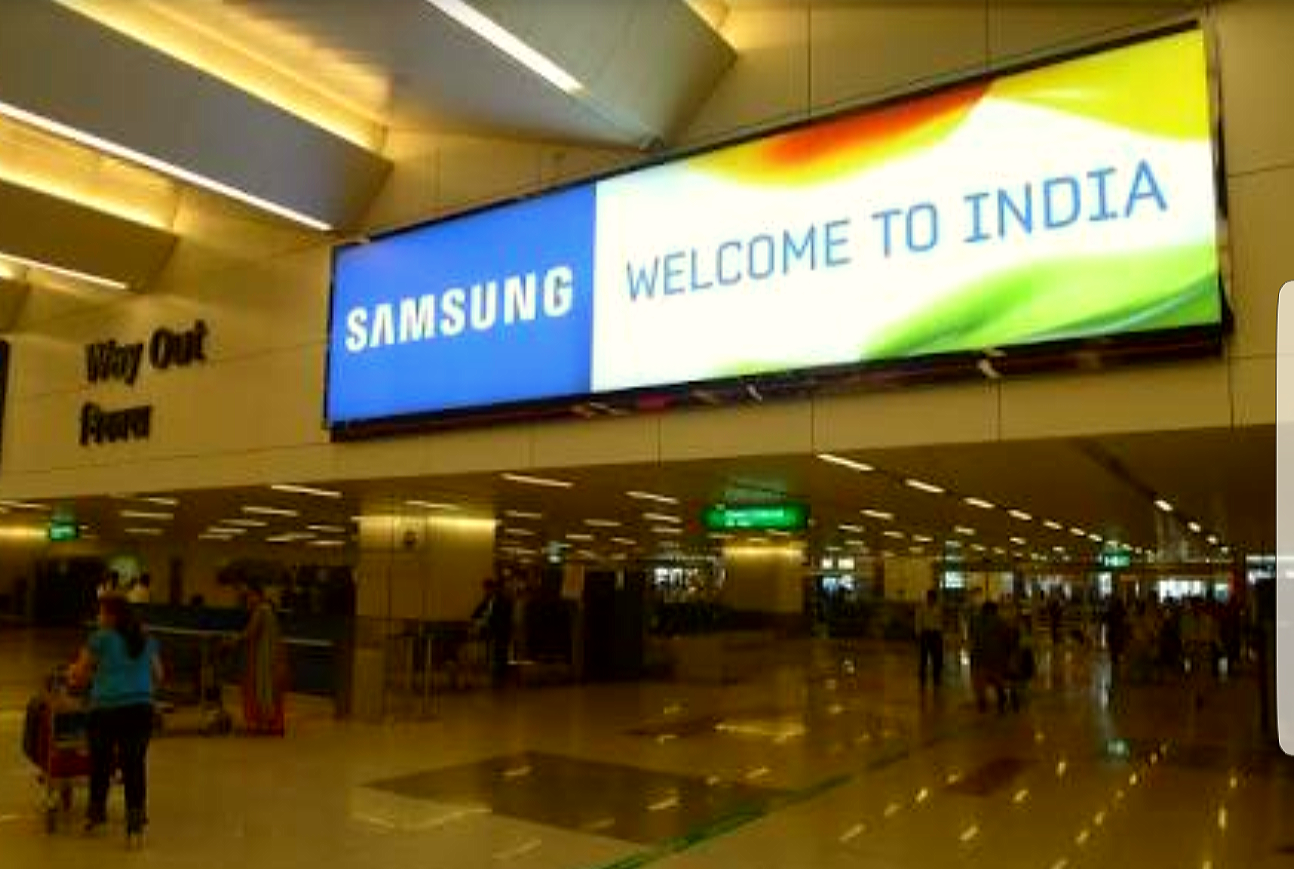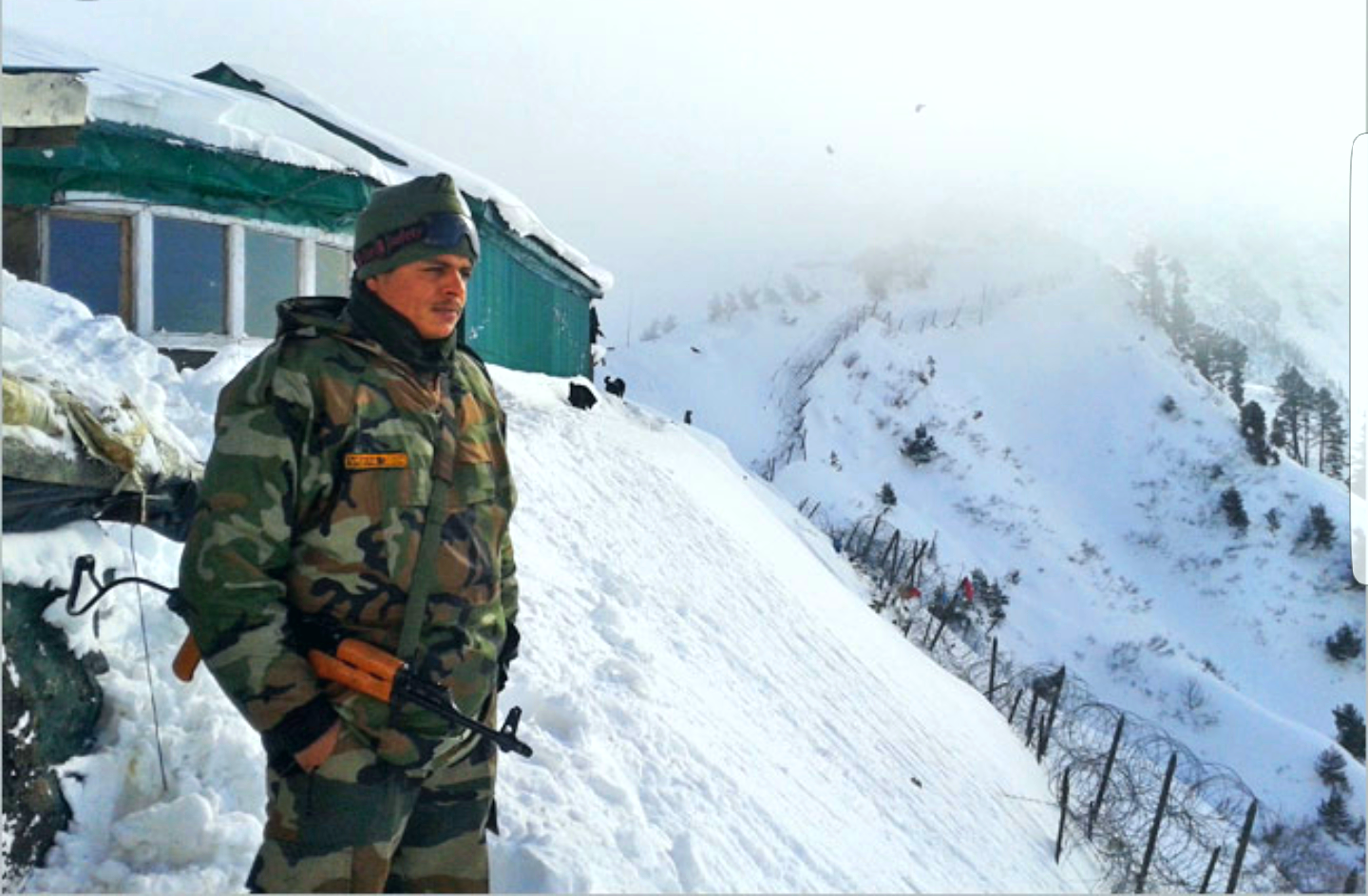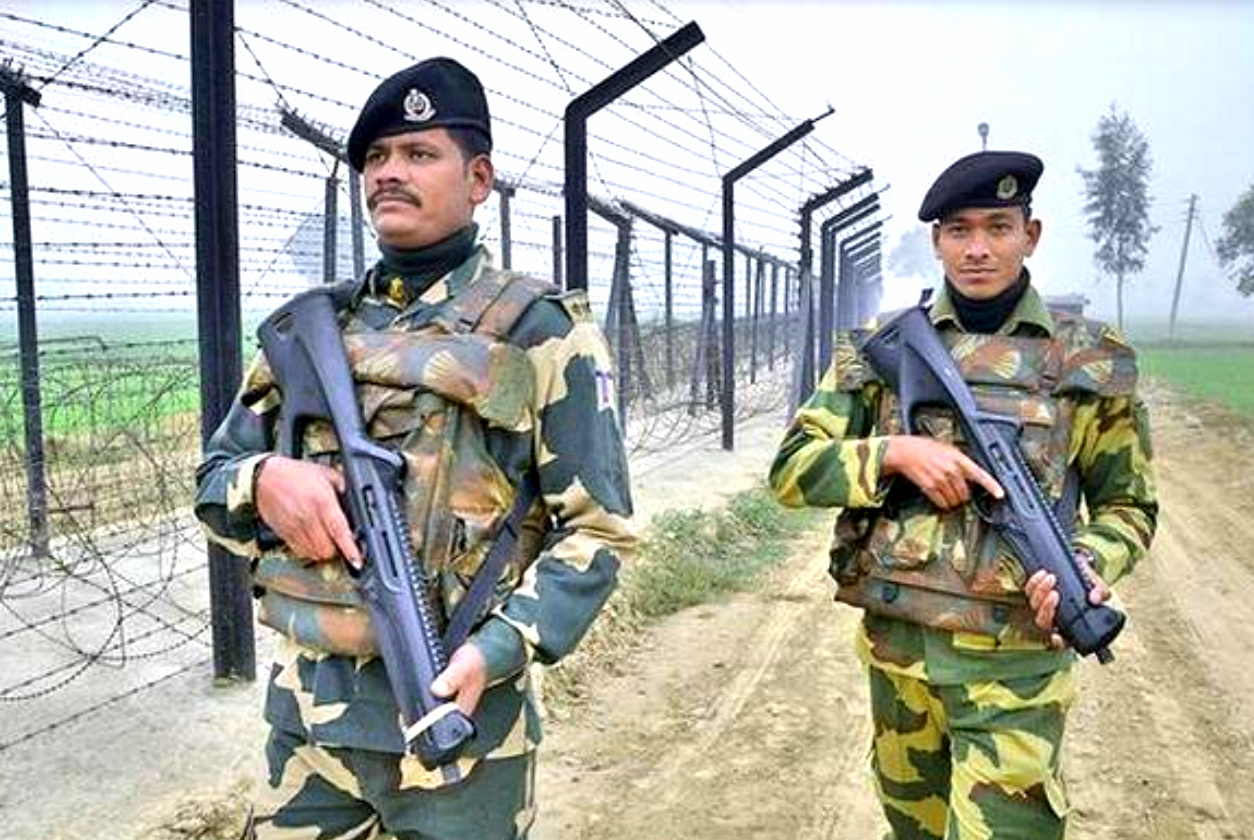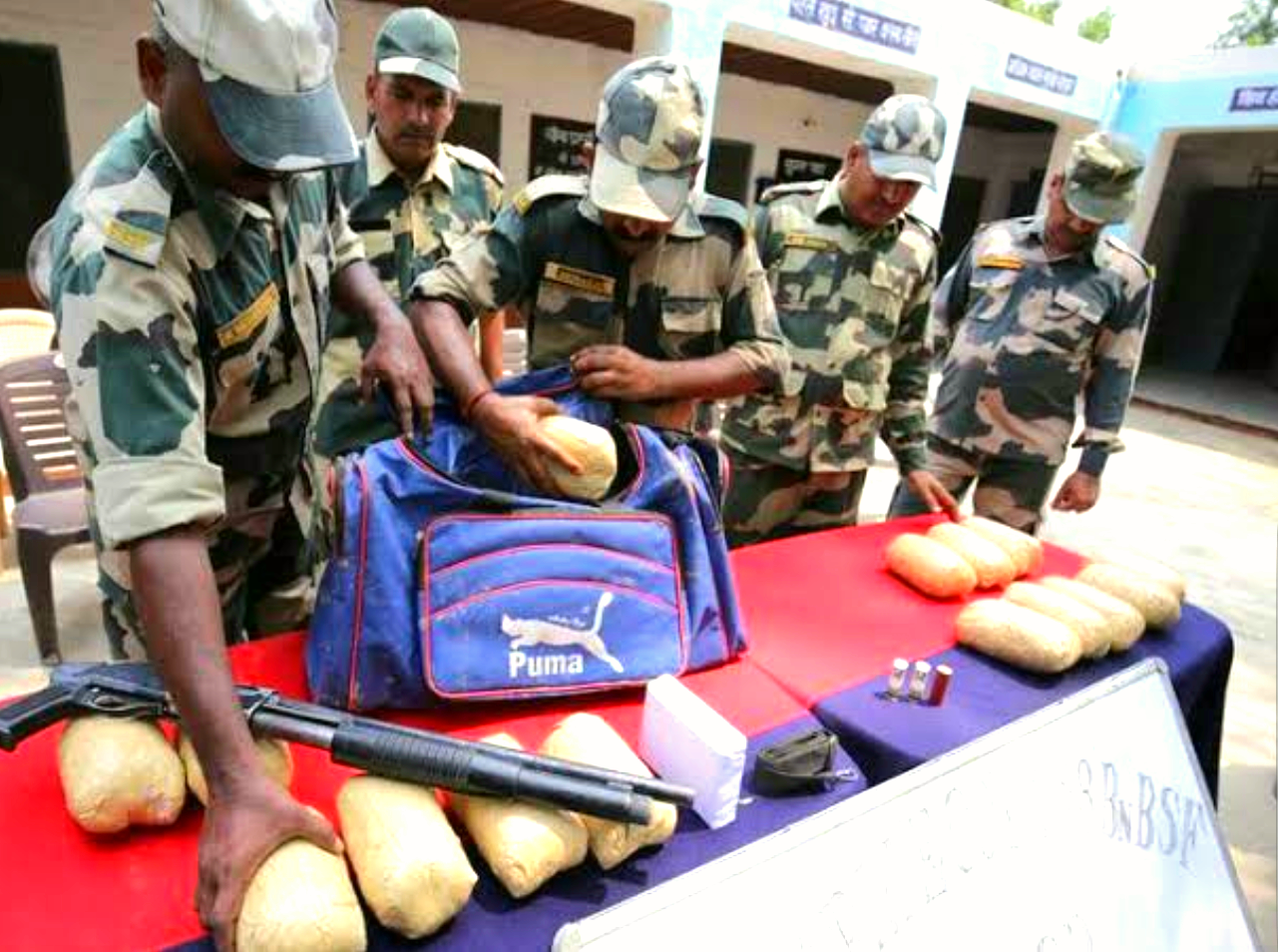Securing India’s borders in the 21st century By - Pranjal Sunkar and Prateek
This essay focuses on the challenges faced by India in securing its vast 15000km+ long land borders with seven nations and 7500km+ long coastline. Apart from this, it delves into the intricacies of smart and effective border management in light of the multitudes of challenges that we face in the 21st century. India’s border security setup and infrastructure… Read More »

This essay focuses on the challenges faced by India in securing its vast 15000km+ long land borders with seven nations and 7500km+ long coastline. Apart from this, it delves into the intricacies of smart and effective border management in light of the multitudes of challenges that we face in the 21st century. India’s border security setup and infrastructure are explained so as to demonstrate how many stakeholders are in actuality involved in border security. The reasons for securing our borders are enlisted and explained in consonance with the geopolitical environment which our country is situated in. A particular point of focus for this essay is nationalism and its relation to the need for having one’s borders secured. We try to answer whether they can be detached from each other or not. A further focus is given on India’s current border management strategy and in furtherance to that we look at various steps taken by the government over the course of time towards a safer India, including plans and policies. In the end, we present our own views on the efficacy and shortcomings of our government in securing the borders and suggest what may be done to fill up the gaps.
Introduction to Nationalism
1. Framework:
Nationalism is often times a vague term. Some would say that it is a sacred, ethical and moral belief about loyalty to one’s nation. However, the plain meaning capturing its essence can be borrowed from the Oxford dictionary as “identification with one’s own nation and support for its interests, especially to the exclusion or detriment of the interests of other nations.” This makes it clear that the element of loyalty does exist when it comes to nationalism but it also includes another rather controversial element which is frowned upon in modern day politics i.e. the putting of national interests over the interests of other nations and putting loyalty to the nation above all other loyalties. Today we live in a globalised world, it is expected of us to show concern for other nations as well.
2. In India:
At present nationalism is a pertinent issue in India, especially with the rise of nationalist political parties across the nation. Be that as it may, it must not be construed as something that is ancient or persistently ever present in our nation. In its modern iteration, it is a relatively newer concept, owing its roots to the Nationalist movements of the 18th century in France and USA which led to a global rise of nations. National identity and unity were originally imposed from above by European states, in order to modernize the economy and society.
In India, it saw its roots in the independence movement against the British colonisers. Nonetheless, those days are bygone. Today, the most common form of nationalism in India is Hindu Nationalism, another term that leaves us with a want for a definition and which also firmly evinces that there is more than one kind of nationalism. Hindu nationalists make an attempt to equate democracy and majoritarianism, that is the pursuance of ‘a permanent unbeatable majority which would place large groups in power forever’. For the purposes of this essay, we focus on cultural nationalism, where the nation is defined by shared culture because it’s in consonance with border security and best supports the ideas we wish to convey.
Stakeholders in the border security infrastructure of India
Robert Frost said that good fences make good neighbours. When it comes to border security, one imagines border fences and soldiers patrolling them dutifully day and night. But there is a lot more to border security than simply building fences at the boundaries with your neighbouring countries. The intricacies are many and the reasons many more. Contrary to popular belief, the physical land borders like the International Boundary (IB), Line of Control (LOC), Actual Ground Position Line (AGPL) or Line of Actual Control (LAC) alone do not constitute borders. We have maritime borders too. In furtherance to that, there are borders crossings at all major international air and shipping ports in India. This is why there is a long list of stakeholders in the border security regime of India that must be highlighted before we tackle the bigger questions. We follow a top-down approach to elucidate on this topic so we must mention the ministries involved and the organisations operated by them.
- Ministry of Home Affairs– Bureau of Immigration, Narcotics Bureau, Intelligence Bureau, Paramilitary forces like Special Frontier Force and Central Armed police forces like Border Security Force (BSF) which guards IB, Indo Tibetan Border Police (ITBP) which guards LAC, Central Reserve Police Force (CRPF) which supports Army and BSF in Kashmir, Sashastra Seema Bal (SSB) which guards the Nepalese border and Central Industrial Security Force (CISF) which guards all international ports in India.
- Ministry of Defence– Indian Armed Forces which guard LOC, Assam Rifles which guards the Myanmar border and National Security Guard which responds to terror threats.
- Research and Analysis Wing
- Ministry of Fisheries
- Ministry of Shipping– Directorate General of Shipping, Directorate General of Lighthouses and Lightships.
- Ministry of Civil Aviation– Airports Authorities of India
- Ministry of Finance– Customs department, Income Tax Department
Reasons for securing borders
Before we look at India’s border policy, we must appreciate the reasons for securing our borders. It not about nationalism, it is for the survival of our state that we need stringent border measures in place, with the latest technology and infrastructure. The reasons are as follows:
- Countering trafficking of drugs, humans, animals, etc
- Preventing smuggling of weapons and fake currency
- Preventing the emergence of Non-State Actors
- Preventing Transnational Organized Crimes
- Countering terrorism, insurgency, separatism and militancy
- Countering agents that flare up communal tensions
- Countering proxy wars from hostile neighbours
- Prevention of capital outflows in an illegal manner
- Prevention of illegal immigration. Contemporary problems like changing demographics due to illegal immigration can also be stalled with effective border measures
- Preventing criminals from escaping justice
- Prevention of illegal emigration
- To facilitate the effective imposition of customs and tariffs and other taxes and duties by providing a secure infrastructure at designated entry/exit points, thereby making it harder for people to illegally bring or take goods from India.
- Protecting national integrity by asserting dominance in border areas so as to prevent encroachment from neighbouring countries. Asserting dominance and dominion in disputed areas.
Indian border policy and the road ahead
Development of border areas took place at a very slow pace for a long time after independence. Because of poor connectivity, economic growth was quite low which was another reason behind instability in the region. The Border Area Development Programme (BADP) was initiated to deal with this issue around the 1990s along the India-Pakistan border and later in North-eastern part of the nation through the 8th Five Year Plan. However, a large number of objectives of this programme remained unachieved.
The ineffectiveness of the BADP in the North-eastern states can be attributed to a number of reasons. Difficult terrain coupled with restrictions put by the BADP guidelines often hamper the implementation of the programme. Corruption, political interference, meagre funds, faulty schemes, and absence of local participation in the decision-making process has robbed the programme from devising schemes which are beneficial to the people residing in these areas. Opaqueness in financial dealings has resulted in either syphoning off the funds meant for the development of the border areas by corrupt bureaucrats and politicians or being utilised in schemes outside the border areas. In most instances, development funds lie unused due to lack of proper coordination and planning.
Later in 2014, the Government came up with a proposal for Comprehensive Integrated Border Management System (CIBMS). The project was inaugurated in 2018 in Jammu along International Border. The pilot projects of approximately 5 kilometres of the stretch each and costing around 6-7 crores per project are being handled by two private firms – TATA Power SED and DAT Con. A composite picture would help senior commanders analyse and classify the threat and mobilise resources accordingly to assist the field commander in his response. The purpose of the CIBMS is to eventually replace manual surveillance/patrolling of the international borders by electronic surveillance and organising the BSF personnel into quick reaction teams to enhance their detection and interception capabilities. Other factors such as power back up, training of the BSF personnel in handling the sophisticated equipment, and maintenance of the equipment are incorporated into the CIBMS project.
Is nationalism essential to our border policy?
Because of its dynamic vitality and its all-pervading character, nationalism is often thought to be very old; sometimes it is mistakenly regarded as a permanent factor in political behaviour.
But then again, the actions that the members of a nation take in seeking to achieve (or sustain) some form of political sovereignty. This perception is bolstered by various instances where a controversial border security element was involved. In the last few years where nationalism has been on the rise and so has been the so-called “anti-nationalism”, slogans like ‘Tum kitne Afzal maroge, ghar-ghar se Afzal niklenge’, ‘Pakistan zindabad’, ‘Kashmir maange azaadi, ladkar lenge azaadi’, ‘Kashmir ki azaadi tak, jung rahegi-jung rahegi’, and ‘Bharat ki barbaadi tak, jung rahegi-jung rahegi’, etc have been echoing in some of the most prestigious of Indian Universities and other public places. This is a cause for concern for the nation especially because it involves these “anti-national” elements. We may find that nationalism fuels fear in our hearts and that fear might compel us to take more stringent and aggressive border measures.
We, the authors, are of the opinion that it is more about national security and less about nationalism. Nationalism is a feeling that comes and goes as per what is pervading in the society at the particular hour. To back this point, we give a small example- It is so easy to forget about the victims of 26/11 attacks because people like Rajeev Sardesai and Pratap Bhanu Mehta and Umar Khalid were not gunned down by Kasab and his LeT companions. Nor were they present when Maoists killed 76 jawans in Dantewada. And they definitely have never spent months on the frozen heights of Siachen glacier protecting our country. Nor are they in any way related to the policemen and CRPF jawans who died fighting terrorists in the 2002 parliament attack. So it is forgotten slowly as time passes and the nationalist fervour dies out in the hearts of ordinary citizens until the next big attack occurs. While National Security is a challenge that is ever present and perennial. It is not up to the nationalism of the citizens, the security of our borders has been since the beginning the responsibility of the government. It is the duty of the government to secure the borders whether it subscribes to a nationalist ideology or otherwise. Factors like the centre party being nationalist may affect the enthusiasm of the government to work on border security but it cannot be said that nationalism is essential for securing the borders.
Key issues and challenges
We have earlier discussed the reasons for securing borders. Owing to the inclination of our neighbours to impair our nation-building efforts, the country’s border management is intricately connected with internal security challenges. The challenge of dealing with long-standing territorial disputes and boundary clashes with China and Pakistan, coupled with porous borders along some of the most unforgiving landscapes in the world, has made smart and effective border management indispensable. In this segment, we ponder on the main issues and challenges that plague us in our endeavour to protect our country.
- Demarcation of land borders: One of the most pertinent issues is the demarcation of the land boundary with our neighbours. It is especially challenging when it comes to our border with China. It is completely unfenced and much of it is lying on disputed territory. It becomes extremely difficult to prevent encroachment from the People’s Liberation Army (PLA) due to this issue. Several instances are evidentiary to this point, they have been slowly and steadily encroaching on Indian soil and challenging Indian sovereignty over the same. Until this issue is resolved we will always be under threat of losing more territory to assertive foreign powers like China. Demarcation and fencing of such borders are therefore crucial at this time. Border roads need to be built in these regions to effectively mobilise troops to counter encroachments.
- High cost of border fencing: India has thousands of kilometres of land borders. A good portion of it lies on uneven and remote terrain, around rivers and marshes, ever moving sand dunes and icy Himalayan mountains. Such topographical features make it even more difficult to build and maintain fences in these regions. In addition to that, there is still a need to fence more borders. Presently only the western border can be said to be completely fenced. The border with Bangladesh, for all its worth, is still not completely fenced. Bangladesh poses a unique challenge for India. It is not just terrorism and drug smuggling that’s the issue here, its large-scale illegal immigration and human trafficking operations which make complete border fencing indispensable. The biggest problem of all is the hundreds of enclaves that dot the border regions. Though the Land Border Agreement between Bangladesh and India have to a great extent solved this issue, it’s still a challenge for the stakeholders.
- Lessons need to be learnt from specific cases like the Pathankot airbase attack, Uri massacre, Nagrota attacks, 2008 Mumbai attacks and the most recent Pulwama attacks. Intelligence gathering is a daunting task but one which can put a stop to these atrocious attacks against our citizens. NATGRID needs to be swiftly implemented and operationalized. There is an urgent need for modernization of surveillance methods and technology on the border to keep up with extreme topography and technological advancements of neighbouring countries. For this, the government can take lessons from regions with similar problems like Israel’s borders with Gaza, West Bank and its other neighbouring states. Their proactive measures have proven to be lifesaving in emergency situations. Technology from Israel can be imported as Israel is a major defence partner of India.System like remote controlled or robotic sentry guns, thermal imaging cameras and alarm systems should be purchased in large quantities to augment the already present border infrastructure. Coastal security is still not up to the mark as per the government’s own findings. Threats from the sea are the biggest challenge we face. There is an urgent need to purchase or build coastal defense crafts to properly police the nation’s 7500km long vulnerable coastline. The same report of the government also mentions that there is a need to increase the number of border outposts along the borders with Bangladesh.
- Illegal immigration is a very serious problem, especially in the northeastern states. These areas have always been sensitive. There have been a lot of separatist movements in the past and some continue till this day. The illegal migration problem adds fuel to this fire. The demography of several regions in states like Assam and Meghalaya has been in altered. The people of these regions are not taking this well as is evident from instances of violence every now and then. Therefore, this illegal immigration must be stopped at all costs. There must be a crackdown on fake identity card distributors. Digitization is the key to solve a lot of these issues but it has proven to be a boon as well as a bane. We must take steps to secure the Aadhar system, data protection measures must be implemented so that it can’t be hacked and accessed by deviants, proper cyber protection policy must be developed by the government in reference to this.
-
Secondly, the National Citizen Register (NRC) and the Citizenship Amendment Bill are also making the region upset. These are policy decisions that need to be carefully addressed keeping in mind the sensitivities of the people who would be affected the most. As per recent developments, the bill has lapsed, which is a relief, at least for the time being.
Strict border management is not always a good thing: Aggressive border management can cause aggravation of petty issues between countries to full-scale warlike scenarios- In 2017 we saw the Doklam crisis unfold, in the past, there have been regular LAC incursions by China anyway, in 2002 we had the India-Pakistan nuclear standoff. These instances remind us of the hazards of crossing the limits which we should not. Being assertive is only good when a strong security setup is in place to back it all up. Another issue is that closed borders and extensive compliances/documentation/requirements curtail the free movement of goods and services across countries as they act as deterrents. It inhibits friendly interaction with the neighbours, feigns mistrust between governments and encourages hostile behaviour and policies.
Conclusion
In conclusion of this essay, we feel that there are indeed shortcomings with respect to how the government has managed our border security till now. There is a huge scope of improvement. We might also add that nationalism although not essential to border security can play a vital role in giving the government the required push to work harder on securing our borders.
By – Pranjal Sunkar and Prateek
Gujarat National Law University
This Essay was shortlisted in the Third Edition of the National Essay Writing Competition on Nation and Nationalism 2019
Sources
Disclaimer: Legal Bites is determined to include views and opinions from all sides of the spectrum. This doesn’t mean we agree with everything we publish. But we do support their right to the freedom of speech. In the case of content writers/editors/bloggers articles, the information, ideas or opinions in the articles are of the author and do not reflect the views of Legal Bites. Legal Bites does not assume any responsibility or liability for the same.
Click Here for more Articles.
Click Here to write your own Blog/Article on Legal Bites.
We hope you found this useful. Support us by Sharing Your Knowledge or any information. Every contribution toward a goal is valuable, regardless of how small it may be.
One of the things that have always kept us motivated is that knowledge sharing is essentially an act of giving. And in that sense, it brings a bit of humanity and warmth to an organizational setting. Keep spreading knowledge …….
Team Legal Bites






